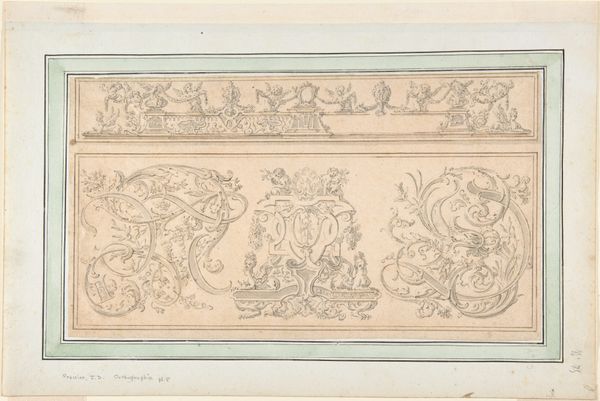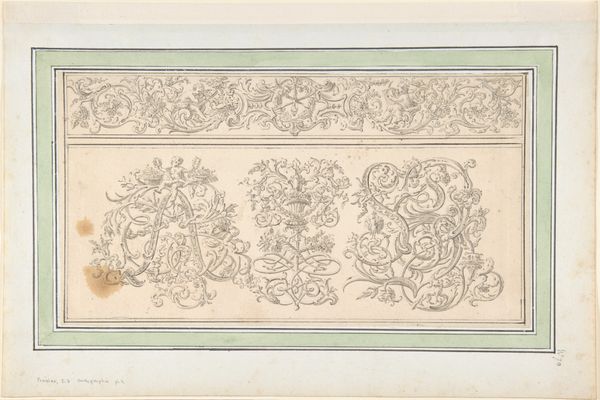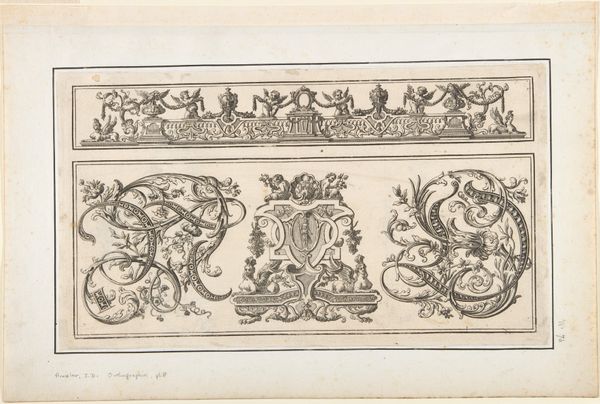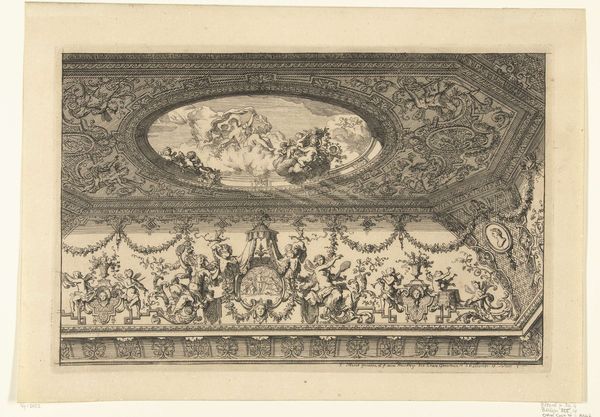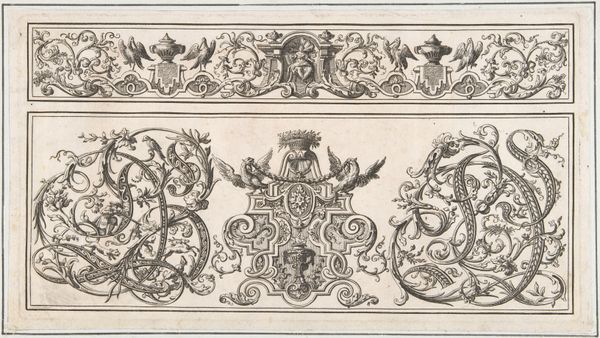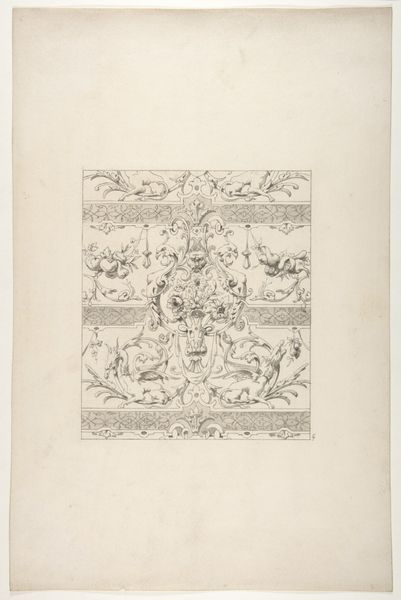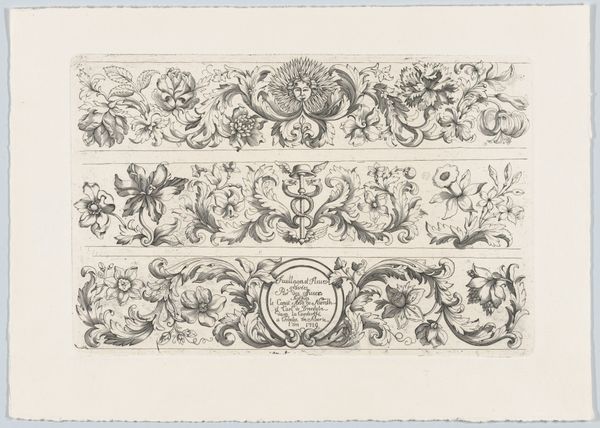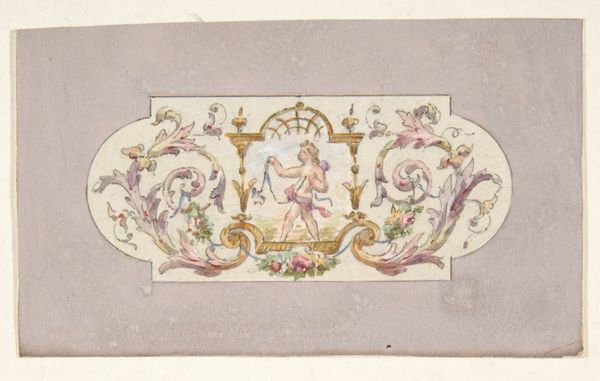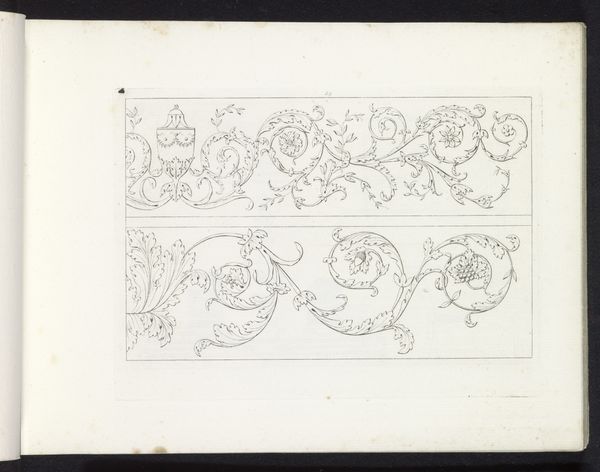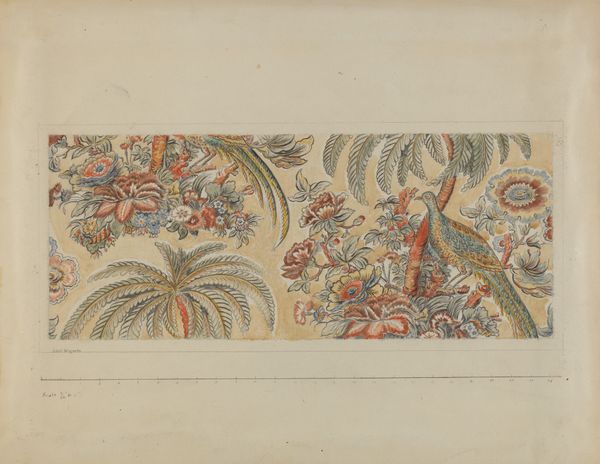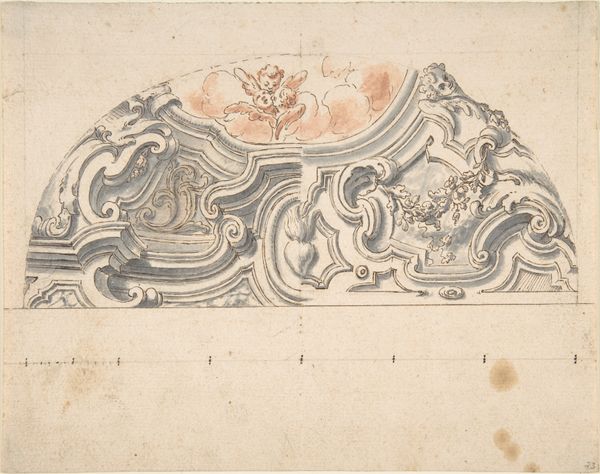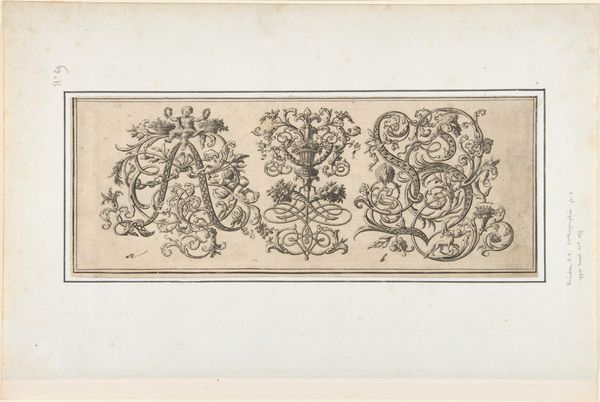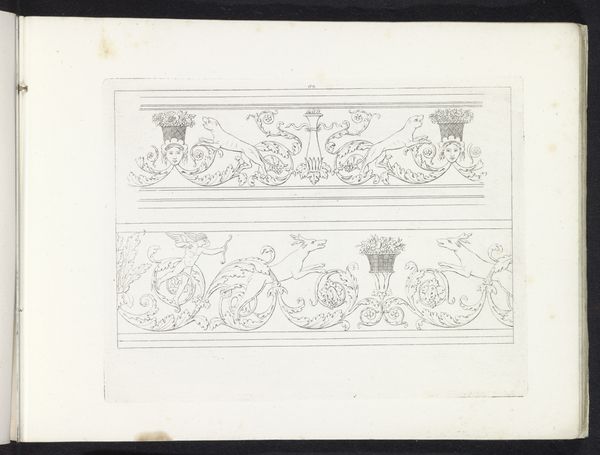
drawing, graphic-art, print
#
drawing
#
graphic-art
#
baroque
# print
#
geometric
#
line
Dimensions: 5 15/16 x 11 in. (15.1 x 28 cm)
Copyright: Public Domain
Curator: Looking at "Design for "Orthographia" pl.5," a work created between 1680 and 1737 by Johann Daniel Preissler, it's fascinating to consider its function as a template for ornamental engraving. These linear patterns were part of a larger visual vocabulary utilized in the Baroque era, primarily in Europe. Editor: Whoa, there's an ornate dizziness to it, isn't there? It feels like a garden swallowed by the page. Those letters twisting into botanical chaos... what do you even *do* with that? Like, practically speaking. Curator: Exactly! The plates offered models for other artisans. Think of it as pre-packaged elegance, accessible for the embellishment of anything from books to buildings. It democratized design, in a way. Editor: Democra… wait a minute. "Elegance for the Masses!" Love that as a motto. It almost feels subversive. And these shapes… it's not just nature; there are echoes of armor and thrones woven into these curlicues. Who gets to *deploy* this weapon of beauty? Curator: Indeed! Its style, emblematic of Baroque sensibilities, visually reinforces status and hierarchy. Even those curling fronds and geometrically stylized letters played a role in signifying power. Consider the act of displaying knowledge and skill through graphic art at the time. It bolstered claims to power, and fostered allegiance. Editor: Power through wallpaper! Seriously though, I'm stuck on the line work. I'd imagine an engraver patiently, diligently cutting into the metal, committing to every swirl. It must’ve felt intensely…permanent. No "undo" button in those days. Curator: Precisely! And consider that designs like these also reflect a highly gendered labor system. We can't assume that male artists executed every ornamental flourish – women were central in many artisanal economies and creative professions in 18th-century Europe, too, but the archival documents typically suppress these narratives. Editor: You've shattered my world! I had this solitary artisan picture perfect in my head and POOF! Now it is all collaboration and complication... love that! Okay, summing up, then: it is a tangle of privilege and persistence. Now I just have to work out if I find that delightful or depressing…or maybe both! Curator: Art often holds those tensions, doesn't it? Thanks for sharing your perspective!
Comments
No comments
Be the first to comment and join the conversation on the ultimate creative platform.
